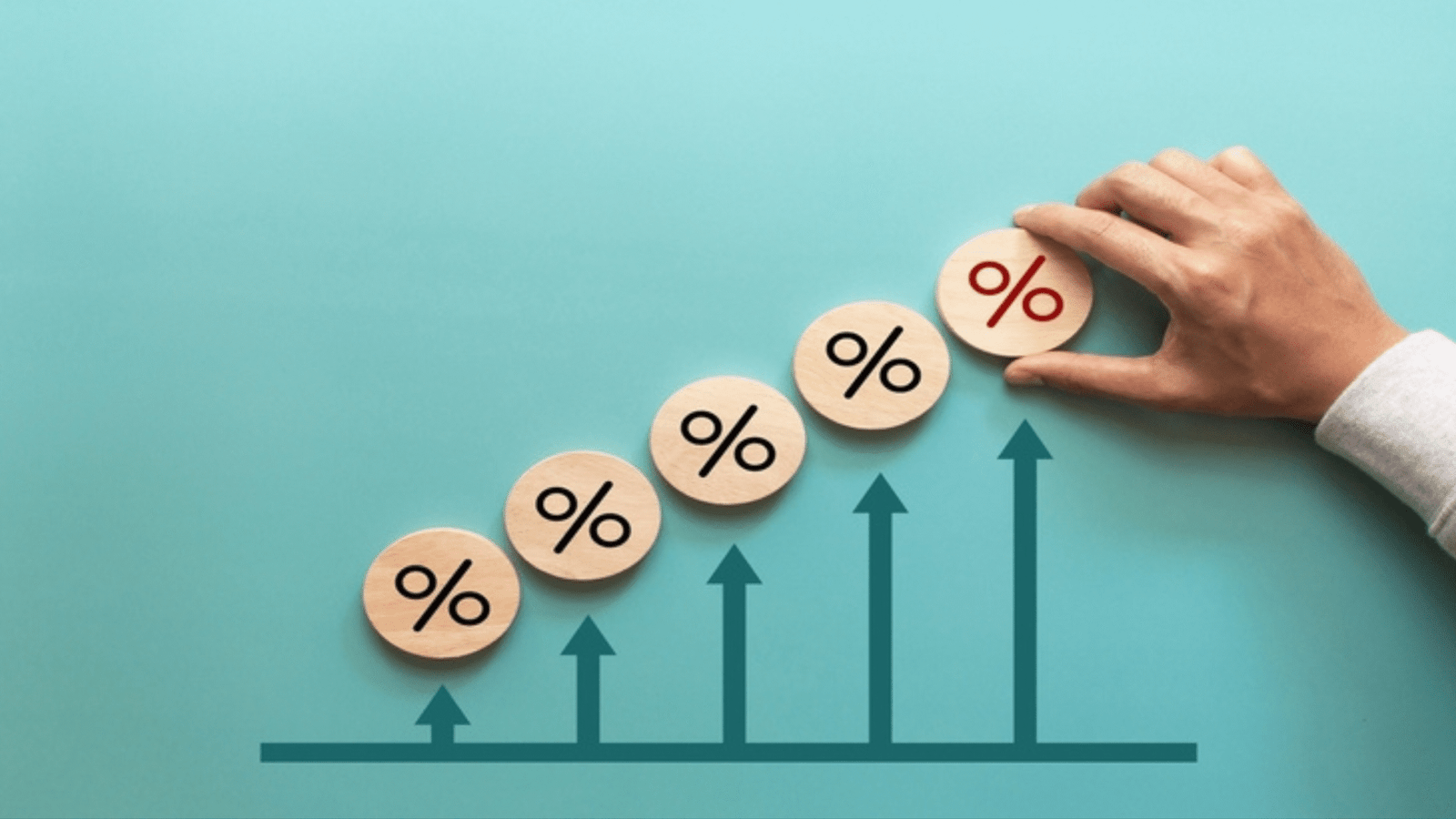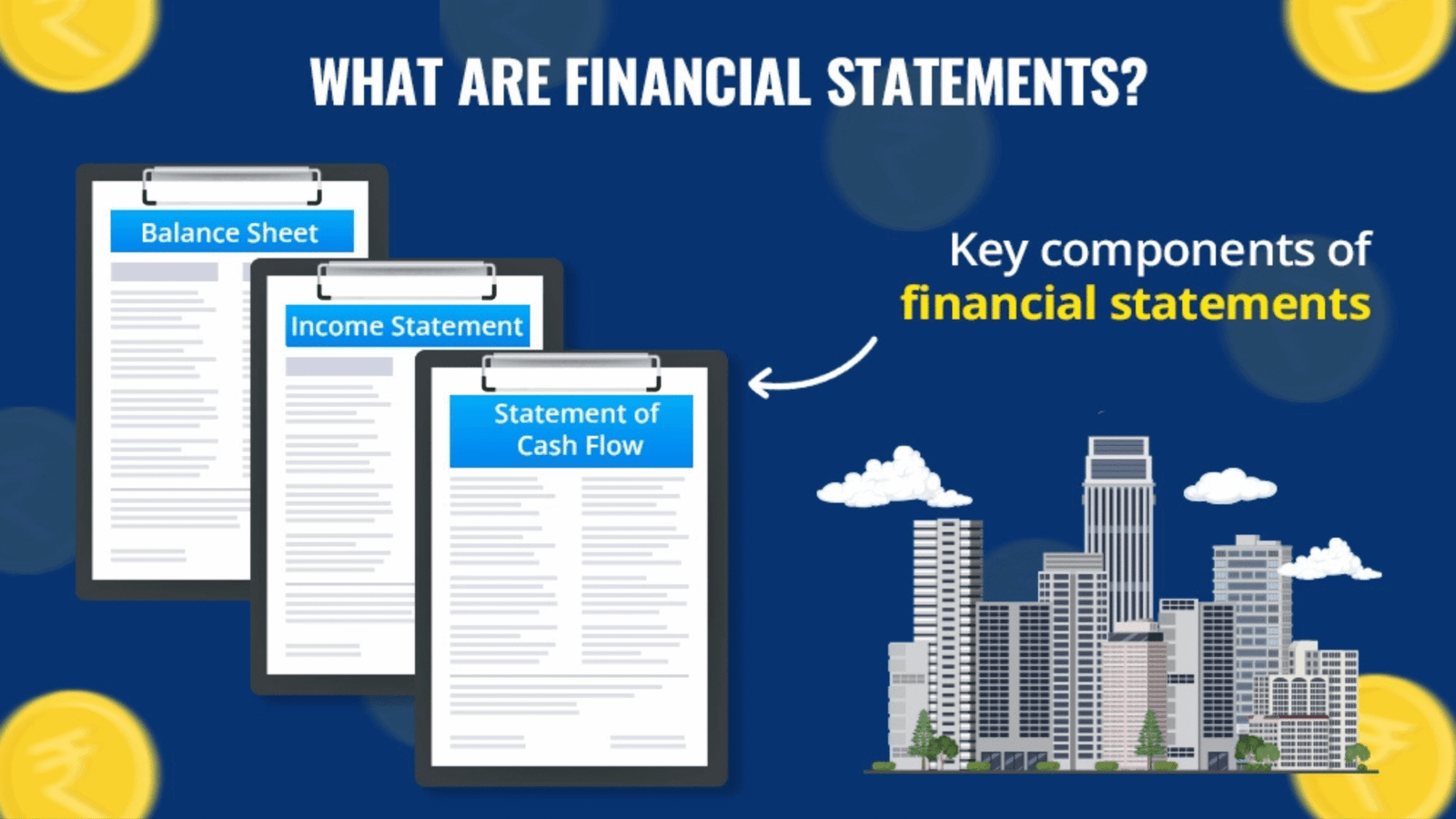Did you know that $10,000 invested at 7% annual returns will grow to over $76,000 in 30 years without adding a single penny more? This remarkable growth exemplifies the magic of compound growth in action. Unlike simple interest, which calculates returns only on your initial deposit, compound interest generates earnings on both your principal and accumulated returns.
Albert Einstein reportedly called this mathematical phenomenon the “eighth wonder of the world.” The reason is simple: money that grows upon itself creates an accelerating curve that becomes steeper with time. This snowball effect transforms modest, consistent savings into substantial wealth.
Financial success rarely happens by accident. Those who build significant wealth typically follow specific patterns that leverage this mathematical advantage. When you invest regularly, your money works continuously, generating returns that produce additional returns without requiring extra effort from you.
The formula works silently in your favor, but it needs two critical ingredients: time and consistency. Starting early, even with smaller amounts, often yields better results than waiting to invest larger sums later. This fundamental principle forms the foundation of most long-term wealth-building strategies.
Key Takeaways
- Compound interest generates returns on both your principal and accumulated earnings
- The growth curve accelerates over time, making patience a valuable financial strategy
- Starting early with small amounts often outperforms larger investments begun later
- Consistent contributions amplify the compound effect significantly
- The “eighth wonder of the world” works silently but requires time to show its full potential
- This mathematical principle forms the foundation of most successful wealth-building approaches
What Is Compound Interest?
Compound interest, often described as “interest on interest,” is a mathematical force that transforms modest savings into substantial wealth over extended periods. It represents a fundamental financial concept where earnings are calculated not only on your initial principal but also on any interest previously accumulated. This creates an exponential growth pattern that dramatically accelerates over time.
The compound interest definition can be simply stated as: the addition of interest to the principal sum of a loan or deposit, resulting in interest earned on interest from that moment on. Unlike simple interest, which only applies to the original amount, compound interest continuously builds upon itself.
To understand the profound difference between these two interest types, consider this comparison:
- Simple interest: Calculated only on the original principal, creating linear growth
- Compound interest: Calculated on both principal and accumulated interest, creating exponential growth
- Growth pattern: Simple interest grows in a straight line; compound interest creates a curve that steepens over time
This distinction becomes remarkably apparent when examining long-term financial outcomes. For example, $10,000 invested at 8% would grow very differently under each method over 30 years:
| Time Period | Simple Interest | Compound Interest | Difference |
|---|---|---|---|
| 10 Years | $18,000 | $21,589 | $3,589 |
| 20 Years | $26,000 | $46,610 | $20,610 |
| 30 Years | $34,000 | $100,627 | $66,627 |
The wealth-building mindset leverages this mathematical advantage. Instead of increasing consumption as income rises (lifestyle inflation), financially savvy individuals maintain reasonable living standards even as earnings grow. This creates an expanding gap between income and expenses that, when invested, accelerates wealth accumulation through compound interest.
Compound interest is the eighth wonder of the world. He who understands it, earns it; he who doesn’t, pays it.
The benefits of compound interest extend across various financial products. You’ll encounter it working in your favor in:
- Savings accounts, where interest compounds daily, monthly, or annually
- Certificates of deposit (CDs), providing higher rates for longer commitment periods
- Investment accounts, where reinvested dividends and capital gains compound over time
- Retirement accounts like 401(k)s and IRAs, where tax advantages enhance compounding effects
Conversely, compound interest works against you with debt, such as credit cards and high-interest loans. When you don’t pay your balance in full, interest compounds on both the principal and previous interest charges, creating a debt spiral that becomes increasingly difficult to escape.
Understanding compound interest fundamentally changes how you approach saving and investing. The earlier you begin, the more dramatic the results, as time becomes your most valuable asset in building wealth. This mathematical principle doesn’t require sophisticated investment strategies—just patience, consistency, and time.
The Formula Behind Compound Interest
The intricacies of compound interest are encapsulated within a mathematical equation, which delineates the exponential growth of capital over time. This concept, though seemingly complex, holds the key to forecasting and optimizing investment outcomes.
The compound interest formula is articulated as:
A = P(1 + r/n)^(nt)
An elucidation of each variable is imperative for comprehension:
- A – The culmination of your investment after a stipulated duration
- P – The initial capital (your initial investment)
- r – The annual interest rate, expressed as a decimal
- n – The frequency of compounding per annum
- t – The duration in years
Consider an example: investing $10,000 at a 5% annual interest rate, compounded annually for 10 years, yields:
A = $10,000 × (1 + 0.05/1)^(1×10) = $10,000 × (1.05)^10 = $16,288.95
Here, the initial $10,000 escalates to $16,288.95 over a decade, with $6,288.95 being the accrued interest. The efficacy of compound interest is magnified with longer investment horizons.
The compounding frequency profoundly influences returns. Enhanced compounding frequency augments growth, as each interest calculation incorporates the previous principal, escalating the subsequent interest calculation.
| Compounding Frequency | Formula Adjustment | Final Amount on $10,000 at 5% for 20 years |
|---|---|---|
| Annually (n=1) | A = P(1 + r/1)^(1×t) | $26,532.98 |
| Quarterly (n=4) | A = P(1 + r/4)^(4×t) | $27,126.40 |
| Monthly (n=12) | A = P(1 + r/12)^(12×t) | $27,271.29 |
| Daily (n=365) | A = P(1 + r/365)^(365×t) | $27,332.45 |
Comparing annual to daily compounding over 20 years reveals a nearly $800 difference on a $10,000 investment. Though seemingly minor, this disparity widens with larger principal amounts and extended timeframes.
Investment scenarios often involve regular contributions, necessitating a modified formula:
A = P(1 + r/n)^(nt) + PMT × ((1 + r/n)^(nt) – 1) ÷ (r/n)
Here, PMT denotes regular contributions. This formula illustrates the accumulation of over $745,000 from monthly contributions of $500 for 30 years at an 8% annual return, despite direct contributions of only $180,000.
Historical data from the S&P 500 reveals average annual returns of approximately 10% before inflation. While past performance is not a guarantee of future results, it highlights the stock market’s long-term investment prowess.
For those averse to manual calculations, numerous compound interest calculators are accessible online. These tools facilitate instant experimentation with various investment parameters, enabling visualization of the impact on long-term outcomes.
Grasping the compound interest formula transcends mere academic interest; it offers practical insights into the financial implications of present-day decisions on future wealth. Mastery of these mathematical principles empowers informed investment decisions and strategic financial planning.
Why Compound Interest Matters
Compound interest is a formidable force in personal finance, serving as a multiplier of wealth for those who initiate it early. Its impact on your financial future is both tangible and profound. Grasping the benefits of compound interest is not merely advantageous—it is imperative for anyone aspiring to accumulate wealth.
The most compelling advantage of compound interest is its capacity to reward early investors significantly. Consider this scenario: if you’re 25 and invest $150 monthly in a retirement account earning an 8% return, you’ll accumulate over $500,000 by age 65. Doubling that contribution to $300 monthly, your nest egg approaches $1 million.
Initiating this financial journey in your 40s, the math becomes less favorable. You’ll need to set aside approximately $750 monthly just to catch up to where you could have been. This stark contrast highlights the “cost of waiting” that financial experts often discuss.
The true magic of compound interest is revealed when your investment reaches a tipping point—the moment when your earnings generate more significant returns than your contributions. This financial momentum creates a snowball effect that grows exponentially with time.
Let’s examine the practical implications of this. A compound interest investment delineates two distinct phases in your wealth-building journey:
- The contribution phase: Early years when your regular deposits make up most of your account growth
- The compound phase: Later years when interest earned on previous interest becomes the dominant growth factor
Another critical benefit is inflation protection. While inflation erodes purchasing power over time, long-term compound interest investments typically outpace inflation rates, preserving and increasing your wealth’s real value. This makes compound interest not just a wealth-building tool but also a wealth-preserving one.
The psychological benefits are equally significant. Understanding compound interest fosters three essential financial habits: patience, consistency, and long-term thinking. These qualities are foundational to successful financial planning and help investors avoid the pitfalls of short-term market fluctuations.
When combined with strategies like dollar-cost averaging and dividend reinvestment, compound interest becomes even more potent. These complementary approaches enhance returns and create multiple layers of growth within your investment accounts.
| Starting Age | Monthly Investment Needed for $1M by Age 65 | Total Contributions | Interest Earned |
|---|---|---|---|
| 25 | $300 | $144,000 | $856,000 |
| 35 | $650 | $234,000 | $766,000 |
| 45 | $1,500 | $360,000 | $640,000 |
| 55 | $4,600 | $552,000 | $448,000 |
This table starkly illustrates the true cost of delaying investment. A 25-year-old investor contributes just $144,000 over time but earns $856,000 in interest—nearly six times their investment. In contrast, someone starting at 55 must contribute significantly more ($552,000) while earning less in interest ($448,000).
The message is unequivocal: time is the most valuable ingredient in the compound interest formula. Every year of delay doesn’t just cost you that year’s growth—it costs you decades of compounding on that growth. This makes compound interest both the most accessible and most powerful wealth-building tool available to average investors.
Real-World Examples of Compound Interest
Compound interest, a mathematical principle, manifests in real-world scenarios, transforming wealth in unexpected ways for seasoned investors. Its application in everyday financial contexts reveals its transformative power, transcending the abstract.
Savings Account Growth
Even with today’s modest interest rates, compound interest offers significant benefits in basic savings accounts. Consider a $10,000 deposit in a savings account with a 2% annual interest rate.
- After 1 year: $10,200 (earned $200)
- After 10 years: $12,190 (earned $2,190)
- After 30 years: $18,114 (earned $8,114)
Though the growth may seem modest, compare it to a non-interest-bearing account. The $10,000 would remain unchanged over three decades. The power of compound interest is evident, even at low rates, with sufficient time.
The Tale of Two Investors
Retirement account comparisons offer striking examples of compound interest. Consider two hypothetical investors:
Early Emily invests $5,000 annually from ages 25-35, then stops. Her total contribution is $50,000. Assuming an 8% average annual return, by age 65, Emily’s account grows to approximately $787,000.
Later Larry waits until age 35 to begin investing. He contributes $5,000 annually from ages 35-65—a total investment of $150,000. With the same 8% return, Larry’s account reaches about $611,000 by age 65.
Despite investing three times as much, Larry ends up with less than Emily. This stark difference highlights the importance of starting early, even with smaller amounts.
“Compound interest is the eighth wonder of the world. He who understands it, earns it; he who doesn’t, pays it.”
Warren Buffett: Compound Interest Personified
Warren Buffett’s investment acumen is legendary, but the true secret to his wealth is time and compounding.
Buffett began investing at age 11 but accumulated over 90% of his wealth after turning 65. At age 65 (in 1995), his net worth was approximately $16 billion. By 2023, it had grown to over $100 billion—demonstrating how compound returns accelerate dramatically in later years.
This wealth accumulation pattern perfectly illustrates the compounding curve—slow initial growth followed by exponential acceleration.
Dividend Reinvestment Plans (DRIPs)
Dividend reinvestment provides another powerful example of compound interest at work. When dividends are automatically reinvested to purchase additional shares, investors benefit from compounding in two ways:
- The number of shares owned increases with each dividend payment
- Each additional share generates its own dividends in subsequent periods
Historically, reinvested dividends have accounted for approximately 40% of the total return of the S&P 500. An investor who reinvested all dividends from a $10,000 investment in the S&P 500 in 1970 would have over $1.6 million today, compared to about $350,000 without dividend reinvestment.
The Dark Side: Credit Card Debt
Compound interest works just as powerfully in reverse. Consider a $5,000 credit card balance with an 18% APR. Making only minimum payments (typically 2% of the balance):
| Payment Approach | Time to Pay Off | Total Interest Paid | Total Cost |
|---|---|---|---|
| Minimum Payments Only | 30+ years | $13,315 | $18,315 |
| Fixed $200 Monthly Payment | 2.8 years | $1,374 | $6,374 |
| Fixed $300 Monthly Payment | 1.7 years | $811 | $5,811 |
This example demonstrates why financial experts warn against carrying credit card balances. The same mathematical principle that builds wealth can also create a debt spiral that’s difficult to escape.
These real-world compound interest examples illustrate an essential financial truth: compound interest rewards patience and punishes procrastination. Whether you’re saving for retirement, investing in the market, or managing debt, understanding how compound interest works in practical situations can dramatically improve your financial outcomes.
How to Calculate Compound Interest
The intricacies of compound interest calculations, though initially daunting, can be demystified through a step-by-step approach. This knowledge is invaluable for anyone contemplating financial planning, whether it involves evaluating investment opportunities or strategizing for retirement. It provides a clear understanding of how capital can exponentially increase over time.
Manual Calculation Using the Formula
The cornerstone of compound interest calculations lies in the application of a fundamental formula:
A = P(1 + r/n)^(nt)
Here, each variable is defined as follows:
- A = Final amount
- P = Principal (initial investment)
- r = Annual interest rate (in decimal form)
- n = Number of times interest compounds per year
- t = Time in years
Consider an illustrative scenario: an initial investment of $10,000 over 10 years at a 6% annual interest rate compounded annually. The calculation for the future value is as follows:
A = $10,000 × (1 + 0.06/1)^(1×10)
A = $10,000 × (1.06)^10
A = $10,000 × 1.7908
A = $17,908
This example reveals that the initial $10,000 would accumulate to $17,908 after a decade, illustrating a $7,908 interest gain solely through the power of compounding.
The Impact of Compounding Frequency
The compounding frequency significantly influences the magnitude of returns. Utilizing the same example, but with quarterly compounding, we observe a notable difference:
A = $10,000 × (1 + 0.06/4)^(4×10)
A = $10,000 × (1.015)^40
A = $10,000 × 1.8140
A = $18,140
Quarterly compounding results in an additional $232 compared to annual compounding. This disparity highlights the importance of understanding compounding frequency when comparing financial products.
Understanding Effective Annual Rate
When comparing investments with disparate compounding frequencies, the Effective Annual Rate (EAR) serves as a standardized metric. The formula for calculating EAR is:
EAR = (1 + r/n)^n – 1
For instance, a 6% interest rate compounded quarterly yields an EAR of:
EAR = (1 + 0.06/4)^4 – 1
EAR = (1.015)^4 – 1
EAR = 1.0614 – 1
EAR = 0.0614 or 6.14%
This calculation indicates that the actual annual return is 6.14%, surpassing the nominal rate of 6%. The more frequent the compounding, the higher the EAR relative to the stated rate.
| Compounding Frequency | Formula for EAR | EAR for 6% Nominal Rate | Value of $10,000 after 10 Years |
|---|---|---|---|
| Annual | (1 + 0.06/1)^1 – 1 | 6.00% | $17,908 |
| Semi-annual | (1 + 0.06/2)^2 – 1 | 6.09% | $18,031 |
| Quarterly | (1 + 0.06/4)^4 – 1 | 6.14% | $18,140 |
| Monthly | (1 + 0.06/12)^12 – 1 | 6.17% | $18,194 |
| Daily | (1 + 0.06/365)^365 – 1 | 6.18% | $18,221 |
Digital Tools for Easier Calculations
While manual calculations offer educational value, digital tools significantly streamline the process:
- Spreadsheet Functions: Excel and Google Sheets provide the FV (Future Value) function. The syntax is FV(rate, nper, pmt, [pv], [type]) where rate is the interest rate per period, nper is the total number of periods, pmt is for regular contributions, pv is the present value, and type indicates when payments are due.
- Financial Calculators: Dedicated financial calculators feature built-in compound interest functions, simplifying complex calculations.
- Online Compound Interest Calculators: Websites such as Investor.gov, Bankrate, and NerdWallet offer free compound interest calculators with user-friendly interfaces.
Calculating with Regular Contributions
In scenarios involving regular contributions, a modified formula is employed:
A = P(1 + r/n)^(nt) + PMT × ((1 + r/n)^(nt) – 1) / (r/n)
Here, PMT represents the regular contribution amount. This formula accounts for both the growth of the initial principal and the accumulation of each subsequent contribution over time.
For instance, if an initial investment of $10,000 is augmented by $200 monthly for 10 years at a 6% annual interest rate compounded monthly, the calculation for the future value is as follows:
A = $10,000(1 + 0.06/12)^(12×10) + $200 × ((1 + 0.06/12)^(12×10) – 1) / (0.06/12)
A = $18,194 + $33,300
A = $51,494
Accounting for Variables
Investing in the real world often involves variables that change. Here’s how to adapt to these changes:
- Changing Interest Rates: Segment your calculation into parts, each with its applicable rate.
- Inflation: Calculate your real rate of return by subtracting the inflation rate from your nominal interest rate.
- Taxes: Multiply your interest earnings by (1 – your tax rate) to determine after-tax returns.
Grasping the intricacies of compound interest empowers you to make informed financial decisions. Though the mathematics may initially seem daunting, practice enhances proficiency. Begin with basic calculations and gradually incorporate more complex variables as your confidence grows.
Factors Affecting Compound Interest

Compound interest is not a standalone phenomenon; it is influenced by a multitude of factors that can either amplify or diminish wealth accumulation. Grasping these variables is essential for investors to strategize effectively, aiming to maximize returns over the long term.
Interest Rate: The Primary Driver
The most evident factor impacting compound interest is the interest rate. Even minor variations in rates can lead to significantly disparate outcomes over extended periods. A striking comparison illustrates this:
A $10,000 investment, held for 30 years at 6%, would grow to approximately $57,435. The same investment, at 8%, would reach $100,627—a difference of over $50,000, solely due to a 2% rate increase!
This highlights how compound interest operates exponentially, not linearly. When seeking investment vehicles, even slightly higher rates can significantly impact your financial future.
Compounding Frequency: More Is Better
The frequency at which interest is calculated and added to the principal significantly influences returns. Compounding can occur:
- Annually (once per year)
- Semi-annually (twice per year)
- Quarterly (four times per year)
- Monthly (twelve times per year)
- Daily (365 times per year)
- Continuously (theoretical infinite compounding)
More frequent compounding enhances your effective annual yield. For instance, a 5% interest rate compounded monthly yields about 5.12% annually, while the same rate compounded daily yields approximately 5.13%.
Time Horizon: Your Greatest Ally
Time is perhaps the most potent factor in compound interest. The longer your money compounds, the more dramatic the growth becomes in later years. This is why starting early is critical for investors.
Financial advisors often reference the “Rule of 72” to illustrate this principle. This rule estimates how long it will take for an investment to double:
72 ÷ Interest Rate = Years to Double
At 6% interest, your money doubles every 12 years. At 9%, it doubles every 8 years. This simple calculation reveals why even a few extra years of investing can significantly impact your final results.
Contribution Amount and Consistency
Regular additions to your principal dramatically enhance the compounding effect. Consistent contributions, even modest ones, can substantially increase your wealth over time compared to a single lump-sum investment.
Savvy investors often practice dollar-cost averaging—investing fixed amounts at regular intervals, regardless of market conditions. This strategy removes emotional decision-making from the equation, allowing you to purchase more shares when prices are low and fewer when prices are high, potentially lowering the average cost per share over time.
Tax Considerations
Taxes can significantly impact effective compound interest rates. Interest earned in taxable accounts is subject to annual taxation, reducing the amount available for future compounding. In contrast, tax-advantaged accounts like 401(k)s and IRAs allow your investments to grow tax-deferred or tax-free.
This tax difference can result in substantially different outcomes over decades. For long-term wealth building, maximizing contributions to tax-advantaged accounts typically provides superior compound growth.
Inflation: The Silent Wealth Eroder
While not directly affecting the mathematical calculation of compound interest, inflation erodes purchasing power over time. An investment earning 7% annually during 3% inflation is actually only gaining 4% in real terms.
When evaluating compound interest rates, always consider the real return (nominal return minus inflation rate). This gives you a more accurate picture of your investment’s true growth.
Reinvestment of Earnings
For compound interest to work its magic, earnings must be reinvested, not withdrawn. This is critical for dividend-paying investments and interest-bearing accounts.
Consider two investors with identical $10,000 stock portfolios yielding 3% annual dividends and 4% price appreciation. Investor A reinvests all dividends, while Investor B takes the dividends as cash. After 20 years, Investor A’s portfolio would be worth approximately $42,919, while Investor B’s would only reach $29,778—a 44% difference!
By understanding and optimizing these seven factors, investors can significantly enhance how compound interest works in their favor. The interplay between these elements creates countless possibilities for wealth accumulation strategies tailored to individual financial goals.
Strategies to Maximize Compound Interest
Maximizing compound interest transcends mere patience; it necessitates strategic decisions that expedite wealth accumulation. When executed adeptly, these methodologies can metamorphose modest savings into considerable wealth over an extended period.
The single most powerful strategy is initiating early. A 25-year-old investing $200 monthly until age 65 can amass more wealth than someone who commences at 35 but invests $400 monthly. This stark contrast highlights the quintessential advantage of compound interest—time is a valuable asset.
Consistency is critical in compound interest investment. Regular contributions, even if modest, generate momentum over time. Automating transfers obviates the psychological hurdles that often hinder adherence to investment plans.
Consider configuring your contributions for auto-deduction from your paycheck or checking account. Financial advisors frequently emphasize, “What you don’t see, you don’t miss.” This automation fosters a hands-off approach, enabling you to maintain your investment plan despite market volatility.
Another effective strategy is incrementally increasing your contribution rates. Direct at least half of any raise or bonus toward your investments before succumbing to lifestyle inflation. This strategy, though seemingly minor, can significantly enhance compound interest growth.
Your asset allocation profoundly influences compound interest outcomes. Younger investors, with longer time horizons, can typically adopt more aggressive allocations, potentially yielding higher returns over decades. As retirement nears, gradually transitioning to more conservative investments is advisable to safeguard your accumulated wealth.
Fees can silently erode wealth when it comes to compound interest. A mere 1% difference in annual fees can diminish your final portfolio value by 20% or more over 30 years. Opting for low-cost index funds and ETFs minimizes this drag on returns.
The best investment strategy is the one you’ll actually follow consistently over time.
Tax efficiency is vital in maximizing compound interest. Leveraging tax-advantaged accounts like 401(k)s, IRAs, and HSAs shields your investments from annual taxation. This enables your money to compound more effectively, without the yearly tax drag on growth.
Resist the temptation to time the market. Consistent long-term investing rewards persistence, not acumen. You don’t need to select individual stocks—a low-cost target-date fund or broad market index fund offers smart, diversified exposure.
Lastly, reinvest all investment income instead of spending it. Dividend reinvestment plans (DRIPs) automate this process for stock investors, ensuring that every dollar earned is reinvested, generating more compound interest. This creates a powerful snowball effect as your money generates more money, which then generates even more.
By adopting these strategies, you can fully leverage the benefits of compound interest, potentially shortening your journey to financial independence.
Misconceptions About Compound Interest
Many individuals harbor misconceptions regarding compound interest, which can lead to missed opportunities and unrealistic financial expectations. It is imperative to dispel these misunderstandings to facilitate more informed financial decision-making.
The myth that compound interest produces noticeable results quickly is widespread. In reality, compound interest is a long-term phenomenon. Its true power is evident over decades, not months or years. Financial advisors emphasize the importance of starting early, as the difference between beginning at 25 versus 35 can amount to hundreds of thousands of dollars by retirement age.
Another prevalent misconception is that high-yield investments are necessary to benefit from compounding. This is not accurate. Moderate returns of 6-8% can yield remarkable results over time. Pursuing extremely high returns often involves excessive risk, which can undermine the steady growth that makes compound interest so powerful.
Many believe they need substantial capital to start benefiting from compound interest. This myth hinders many from embarking on their investment journey. The truth is that small, regular contributions can grow significantly through compounding. For instance, a monthly investment of just $100 can grow to over $150,000 in 30 years at a 7% annual return.
There’s also a dangerous misconception that compound interest works equally well at any age. While it’s never too late to start investing, the time horizon is critical. The difference between starting at age 20 versus age 40 can mean the difference between a comfortable retirement and financial struggle, even with the same monthly contributions.
- A 25-year-old investing $300 monthly until age 65 (at 7% return) would accumulate about $745,000
- A 45-year-old investing the same amount would only reach about $165,000
Some people mistakenly believe that compound interest guarantees wealth. Compound interest is a mathematical principle, not a magic formula. It requires consistent application and appropriate investment choices to be effective. Market downturns, inflation, and inconsistent contributions can all impact your results.
There’s also a tendency to think compound interest calculations can precisely predict future wealth. In the real world, variables like market volatility, changing interest rates, and inflation create uncertainty in outcomes. While calculators provide useful estimates, they can’t account for all real-world variables.
Many believe compound interest is only relevant for conservative investments like savings accounts. In truth, compound interest applies to all investments that generate returns that can be reinvested, including stocks, bonds, and real estate. The principle works whenever earnings generate more earnings.
Understanding how compound interest works in practice, not just theory, helps set realistic expectations. The most successful investors recognize that compound interest is powerful but requires patience, consistency, and a long-term perspective. By avoiding these common misconceptions, you can make more informed decisions about your financial future.
The Role of Inflation in Compound Interest

The nexus between inflation and compound interest is a cornerstone of long-term financial strategy, yet often overlooked. Despite the allure of compound interest, inflation can erode its value significantly over time.
Inflation, characterized by a general price increase and a decrease in the purchasing power of money, acts as a stealthy tax on investments. Measured by the Consumer Price Index (CPI), it diminishes the value of each dollar, rendering it less effective in purchasing goods and services.
This distinction gives rise to two critical concepts: nominal returns and real returns. Nominal returns reflect the interest or investment return before adjusting for inflation. Real returns, conversely, reveal the investment’s true performance by subtracting the inflation rate.
For instance, an investment earning 7% annually, while inflation is 3%, yields a real return of 4%. This disparity becomes more pronounced over extended periods due to the compounding effect in both directions.
Historically, U.S. inflation has averaged around 3% annually over the past century, with notable fluctuations. The 1970s saw inflation peak above 10%, severely impacting investment returns. More recently, inflation has generally remained below 3%, with a notable spike in 2021-2022.
Consider this example: $100,000 invested at a 7% annual compound interest rate would grow to approximately $761,000 after 30 years in nominal terms. Adjusted for 3% annual inflation, the real purchasing power would be about $315,000 in today’s dollars.
| Time Period | Nominal Value ($) | Real Value with 3% Inflation ($) | Purchasing Power Loss (%) |
|---|---|---|---|
| 10 years | 196,715 | 146,410 | 25.6% |
| 20 years | 386,968 | 214,548 | 44.6% |
| 30 years | 761,226 | 315,125 | 58.6% |
| 40 years | 1,497,446 | 462,893 | 69.1% |
To safeguard compound interest investments against inflation, a strategic asset allocation is imperative. Historically, certain asset classes have outpaced inflation more effectively:
- Stocks – Dividend-growing companies that can increase payouts above inflation rates
- Real estate – Property values and rental income often rise with inflation
- Treasury Inflation-Protected Securities (TIPS) – Government bonds designed to adjust with inflation
- Commodities – Natural resources that typically increase in price during inflationary periods
Tax considerations further complicate the inflation equation. The IRS taxes nominal gains, not inflation-adjusted gains, potentially eroding purchasing power further. For example, if an investment grows by 5% but inflation is 3%, the entire 5% is taxed, even though the real gain is only 2%.
This tax impact makes tax-advantaged accounts like 401(k)s and IRAs invaluable. As noted in our data, “qualified dividends and long-term capital gains are taxed lower than ordinary income,” allowing wealth builders to retain more of their earnings through favorable tax treatment.
When evaluating compound interest investments, sophisticated investors also consider the “inflation risk premium.” This represents the additional return investors demand for accepting the uncertainty of future inflation. Longer-term investments typically command higher inflation risk premiums due to greater uncertainty about future inflation rates.
For retirement planning, accounting for inflation is critical. A retirement requiring $50,000 annually today could necessitate over $90,000 annually in 20 years with just 3% inflation. This highlights the necessity of compound interest rates exceeding inflation to maintain a standard of living.
“Inflation is as violent as a mugger, as frightening as an armed robber and as deadly as a hit man.”
Understanding the interplay between inflation and compound interest is essential for investors to set realistic expectations and make informed decisions. While compound interest grows wealth through mathematical magic, inflation serves as a constant reminder that nominal returns do not fully capture investment performance.
Starting Your Journey with Compound Interest
Embarking on the path of compound interest necessitates no prior financial acumen or substantial capital. The initiation point often lies in the 401(k) plans offered by employers. These accounts facilitate pre-tax contributions from your paycheck, with many employers matching a portion of your investment. This equates to acquiring free capital that accrues exponentially over time.
Exploring further, Individual Retirement Accounts (IRAs) emerge as viable alternatives. A Roth IRA enables tax-free growth and withdrawals in retirement, mirroring the benefits of a 401(k). In contrast, a Traditional IRA offers immediate tax advantages akin to those of a 401(k).
Real-world narratives underscore the potency of modest beginnings. Meaghan Keeven exemplifies this by saving $200 weekly, a sum derived from forgoing $15 lunch salads. These savings were channeled into investments, eventually becoming a substantial asset, as Forbes has documented.
In the realm of investment, prioritize vehicles that amplify compound interest. Index funds and ETFs, with their diversification and low fees, stand out. Dividend-paying stocks, when coupled with reinvestment plans, can expedite growth. The essence lies in consistent, albeit modest, contributions and patience, allowing compound interest to unfold its transformative power.
Implement automatic contributions and dividend reinvestment to adhere to compound interest principles. Time, your most potent ally, is critical in this endeavor. Initiating with whatever sum you can commit today will propel you toward financial ascension through the unparalleled influence of compound interest.






